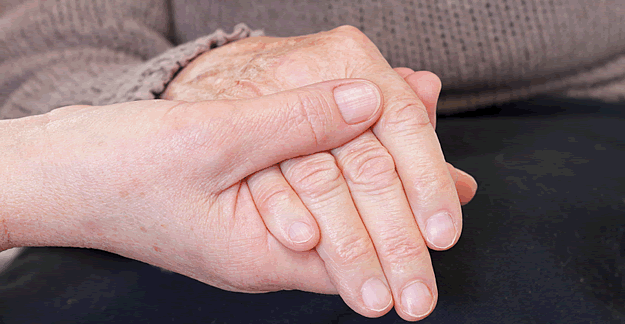Up to 1.5 million Americans — 75 % of them women — have rheumatoid arthritis (RA). The vast majority of sufferers rely on disease-modifying drugs to control their painful symptoms. “There’s a greater than 90% chance that symptoms will disappear when medications are started within the first 2 to 3 months of onset,” says Nathan Wei, MD, director of the Arthritis Treatment Center in Frederick, MD. The bad news is that many of these medications have significant side effects, and some are quite expensive. Because the disease is chronic, drug therapy typically is recommended for at least 5 years and most likely will be needed for life. Luckily, there are 7 lifestyle changes (below) that can help ease symptoms.
Browse This Article
What Is RA?
Rheumatoid arthritis affects the same joints on both sides of the body (for instance, both knees or both wrists). Some people with rheumatoid arthritis experience mild symptoms with only an occasional flare-up. For others, the pain can be constant and worsen over time. “Keeping the disease under control is important,” notes Dr. Wei. Because the disease can inflame the linings of the heart, people with rheumatoid arthritis have a greater risk of heart failure and heart attack. Plus, damage to joints is irreversible.Rheumatoid arthritis occurs when the body’s autoimmune system mistakenly attacks healthy tissues in the joints, mainly those in the wrists, hands, ankles and feet. “As fluid builds and cartilage and bone are destroyed, joints become stiff, painful, red, swollen and feel warm to the touch,” says rheumatologist Dr. Wei. Low-grade fevers, fatigue and weight loss also are common. The inflammation sometimes spreads to larger joints and damages organs like the heart, lungs and skin. Women between the ages of 30 and 60 are most at risk for the disease. Fluctuating hormone levels are likely to blame for women’s high propensity to develop RA. In men, the disease tends to appear after age 60.
7 Lifestyle Changes
While medications are often necessary, implementing these lifestyle changes is equally important:
1. Stay Active
Exercising may be the last thing you want to do when your joints ache, yet research shows that physical activity alleviates joint pain and stiffness, increases joint mobility, strengthens muscles and improves mental health. “Water exercises and those that improve flexibility like yoga and tai chi are particularly good for achy joints,” says Dr. Wei. How often you exercise and for how long depends greatly on how you feel each day. It’s natural to experience some muscle soreness after a workout. But increased joint pain may be a sign that you’re exercising too hard or too much and need to ease up.
Audrey Sawyer Mills quit exercising after being diagnosed with rheumatoid arthritis at age 29. “I hurt too badly,” says the Houston, Texas, resident. Soon, Mills gained 40 pounds and needed a cane to get around. At that point, Mills decided she was too young to be feeling old, so she began working with a physical therapist and incorporating physical activity into her life. Today, Mills, age 44, is a regular in spin, water aerobics, Pilates and strength training classes. Mills credits these lifestyle changes, along with medications, with helping her to achieve greater mobility and enjoy life again.
2. Maintain a Healthy Weight
Every pound of excess weight puts about 4 extra pounds of pressure on joints. This extra pressure worsens aches and pains. Plus, fat tissue spurs chronic inflammation and exacerbates existing swelling and tenderness in arthritic joints. A 2014 study in the Annals of the Rheumatic Diseases found that women with body mass index values of 25 or higher have a 35% greater risk of getting RA.
3. Eat a Balanced Diet
Certain foods have been shown to fight inflammation, strengthen bones and boost the immune system. These include foods rich in inflammatory-fighting omega-3 fatty acids like salmon, tuna, olive oil and soybeans; antioxidant-rich green tea; fiber-rich whole grains and beans; and vitamin C-rich citrus fruits. Findings from the Nurses’ Health Study (NHS) and NHS 2, published in the American Journal of Clinical Nutrition, suggest it’s also a good idea to avoid sugary soft drinks because they may contribute to the onset of rheumatoid arthritis. Sugary drinks are considered to be a major contributor to obesity — and excess weight is known to increase the risk of RA.
4. Cut Back on Salt
… especially if you smoke. In a recent study published in Rheumatology, Swedish researchers at Umea University found that sodium intake more than doubled the risk for rheumatoid arthritis among smokers. Smoking also boosts the risk of developing RA among those who have specific arthritis genes (HLA-DRB1 and PTPN22). A blood test can determine whether you have these genes. Smoking heightens the disease’s severity and reduces the effectiveness of medications.
5. Get More of the ‘Sunshine Vitamin’
A study published in the December 2012 issue of Therapeutic Advances in Endocrinology and Metabolism suggests that low levels of vitamin D up one’s risk of developing autoimmune disorders including rheumatoid arthritis. This vitamin deficiency also may worsen existing arthritis symptoms. A blood test can determine vitamin D levels. The Office of Dietary Supplements at the National Institutes of Health recommends 600 international units (IU) of daily vitamin D for adults between the ages of 19 and 70. Adults over 70 years should get 800 IUs. (The Vitamin D Council — a nonprofit organization that works to educate the public about vitamin D — recommends a much higher daily intake of 5,000 IU for adults, while the Institute of Medicine notes that an Upper Intake Level of 4,000 IU is acceptable. See Vitamin D: Pros and Cons for more information.)
6. Manage Stress
Relaxation exercises including meditation, deep breathing and guided imagery are good for releasing muscle tension and easing arthritis pain. Once a month, Mills treats herself to a Swedish massage. “It relaxes me and soothes my aching joints,” she says. Occasionally, she’ll go for a deep tissue massage to loosen tight muscles.
7. Try Alternative Treatments
Acupuncture helps some people with rheumatoid arthritis by releasing pain-blocking endorphins and interfering with the transmission of pain signals to the brain via the nervous system. Another alternative treatment that shows promise is transcutaneous electrical nerve stimulation (TENS) therapy. With TENS therapy, a wearable device sends painless electrical currents to nerve fibers. This causes the release of pain-killing endorphins, as well as the generation of heat that relieves stiffness and pain. TENS is usually prescribed and administered by a doctor or physical therapist and generally covered by insurance and Medicare. Some patients experience permanent pain relief after repeated TENS sessions. Others undergo therapy for a prolonged period of time.
Have you tried any of these lifestyle changes for rheumatoid arthritis? Have they worked? Post in our Comments section below.
Many people with rheumatoid arthritis rely on a combination of lifestyle changes, medications and alternative treatments to control symptoms and prevent flare-ups. The addition of these changes and alternative treatments can help reduce one’s dependence on drugs, thereby alleviating the side effects of RA medications.
Jeannette Moninger is a Denver-based freelance health writer.
For More Information
American College of Rheumatology
12 Best Foods for Rheumatoid Arthritis (Arthritis Foundation)
6 Secrets of Successful Exercisers With RA (Health Monitor)
Specialized Therapy Shown to Help Those With Rheumatoid Arthritis (Psych Central)







